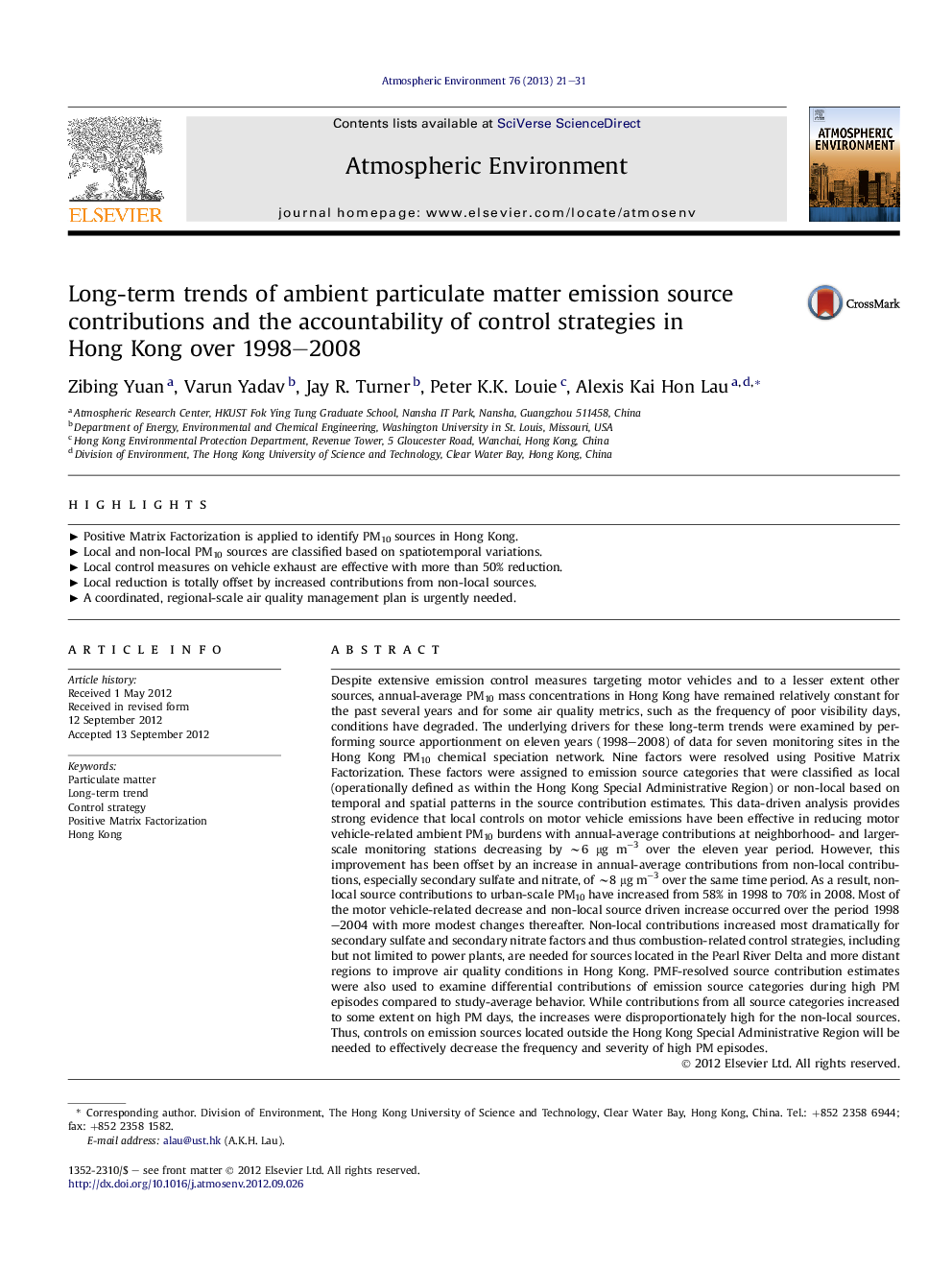| Article ID | Journal | Published Year | Pages | File Type |
|---|---|---|---|---|
| 4438247 | Atmospheric Environment | 2013 | 11 Pages |
Despite extensive emission control measures targeting motor vehicles and to a lesser extent other sources, annual-average PM10 mass concentrations in Hong Kong have remained relatively constant for the past several years and for some air quality metrics, such as the frequency of poor visibility days, conditions have degraded. The underlying drivers for these long-term trends were examined by performing source apportionment on eleven years (1998–2008) of data for seven monitoring sites in the Hong Kong PM10 chemical speciation network. Nine factors were resolved using Positive Matrix Factorization. These factors were assigned to emission source categories that were classified as local (operationally defined as within the Hong Kong Special Administrative Region) or non-local based on temporal and spatial patterns in the source contribution estimates. This data-driven analysis provides strong evidence that local controls on motor vehicle emissions have been effective in reducing motor vehicle-related ambient PM10 burdens with annual-average contributions at neighborhood- and larger-scale monitoring stations decreasing by ∼6 μg m−3 over the eleven year period. However, this improvement has been offset by an increase in annual-average contributions from non-local contributions, especially secondary sulfate and nitrate, of ∼8 μg m−3 over the same time period. As a result, non-local source contributions to urban-scale PM10 have increased from 58% in 1998 to 70% in 2008. Most of the motor vehicle-related decrease and non-local source driven increase occurred over the period 1998–2004 with more modest changes thereafter. Non-local contributions increased most dramatically for secondary sulfate and secondary nitrate factors and thus combustion-related control strategies, including but not limited to power plants, are needed for sources located in the Pearl River Delta and more distant regions to improve air quality conditions in Hong Kong. PMF-resolved source contribution estimates were also used to examine differential contributions of emission source categories during high PM episodes compared to study-average behavior. While contributions from all source categories increased to some extent on high PM days, the increases were disproportionately high for the non-local sources. Thus, controls on emission sources located outside the Hong Kong Special Administrative Region will be needed to effectively decrease the frequency and severity of high PM episodes.
► Positive Matrix Factorization is applied to identify PM10 sources in Hong Kong. ► Local and non-local PM10 sources are classified based on spatiotemporal variations. ► Local control measures on vehicle exhaust are effective with more than 50% reduction. ► Local reduction is totally offset by increased contributions from non-local sources. ► A coordinated, regional-scale air quality management plan is urgently needed.
